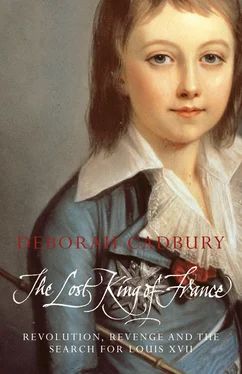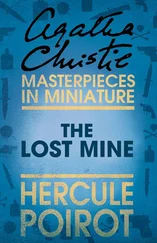Maria-Antonia was slightly built, with all the attractiveness of youth. ‘She has a most graceful figure; holds herself well; and if, as may be hoped, she grows a little taller, she will possess every good quality one could wish for in a great princess,’ wrote her tutor, the Abbé Jacques de Vermond, adding, ‘her heart and character are both excellent’. Maria-Antonia had large blue eyes, reddish blonde hair and a good complexion; many even considered her a beauty. The ageing French king, Louis XV, eagerly enquiring about the prospective Austrian bride for his grandson, was told by officials that she had ‘a charming face and beautiful eyes’. She had, however, inherited the Habsburg projecting lower lip and prominent brow, which prompted her mother, in preparations for the event, to bring a coiffeur from France to arrange her hair to soften the line of her forehead.
Maria-Antonia, the subject of all this detailed scrutiny, had had her future determined when she was thirteen. ‘Others make war but thou, O happy Austria, makest marriages,’ was a family motto. Her mother, the Empress Maria-Theresa, who was widely considered to be the best queen in Europe since Elizabeth I of England, ruled the Habsburg empire. Her territories encompassed most of central Europe, reaching to parts of Romania in the east, regions of Germany in the north, south to Lombardy and Tuscany in Italy and west to the Austrian Netherlands, now Belgium. Some of this success was due to a series of strategic marriages, which were an important part of royal diplomacy. Maria-Antonia was the youngest of sixteen children and several of her older sisters had already taken part in Austrian foreign policy. One sister was married to the governor general of the Austrian Netherlands, another became the Duchess of Parma, and a third, Maria-Antonia’s favourite sister, Maria Carolina, had become the queen of Naples – a role that at first she deplored. ‘The suffering is true martyrdom,’ Maria Carolina wrote home, ‘made worse by being expected to look happy … I pity Antonia who has yet to suffer it.’
For the Empress Maria-Theresa, eclipsing all these marriages was the prospect of an alliance with the French. France was seen as the richest and most powerful state in Europe, and, with twenty-five million people, was also the largest. Yet France had been Austria’s enemy for over two hundred years. For many, a permanent alliance between the two former long-standing enemies seemed out of the question, even potentially dangerous. However, the empress was determined to secure a match between her youngest daughter and the Dauphin of France. Such an important marriage would seal a political alliance and enable the two countries to work as allies against the growing Prussian influence.
Despite the exciting prospects that lay ahead, Maria-Antonia’s departure from her home, and her mother in particular, was still an ordeal, according to one witness, Joseph Weber, the son of her former nurse.
‘The young Maria-Antonia burst into tears and the spectators, touched by the sight, shared the cruel sufferings of mother and daughter. Maria-Theresa … took her into her arms and hugged her … ‘Adieu, my dear daughter; a great distance is going to separate us, but be just, be humane and imbued with a sense of the duties of your rank and I will always be proud of the regrets which I shall always feel … Do so much good to the people of France that they will be able to say that I have sent them an angel.’
As her carriage departed, Maria-Antonia, ‘her face bathed with tears, covered her eyes now with a handkerchief, now with her hands, and put her head out of the window again and again, to see once more the palace of her fathers to which she would never return’. All she had to represent her future was a miniature portrait of her future husband, Louis-Auguste, the Dauphin.
Her magnificent cortège travelled for a week through Austria and Bavaria until finally they reached the frontier with France, on the banks of the River Rhine near Kehl. On an island in the middle of the river, Maria-Antonia had to undergo a ceremony in which she was symbolically stripped of her Austrian roots and was then reborn, robed in French attire. A magnificent wooden pavilion, over a hundred feet long, had been constructed, divided into two main sections. On one side were the courtiers from Vienna and on the other those from France. Once the formal ceremonies were completed the door to the French side was opened, and the Dauphin’s future bride had to make her entrance into the French court, no longer Maria-Antonia but Marie-Antoinette. As she realised that the door to the Austrian side had closed behind her on all those familiar faces, she was overwhelmed, and ‘rushed’ into the French side ‘with tears in her eyes’.
As she continued her journey into France she received a rapturous welcome. Every kind of extravagant preparation had been made to honour the young princess. There were displays of all kinds – fireworks, dances, theatre – great triumphal arches built, petals strewn before her feet, floating gardens on the river beneath her window, fountains flowing with wine, endless enthusiastic crowds, cheer upon cheer. If she had left the Austrian court in tears, her slow progress through France to such approbation could only fill her with every possible hope.
By 14 May she arrived at Compiègne, some forty miles north-east of Paris, where she was to meet her future husband, Louis-Auguste. By now well briefed on etiquette by her new advisor, the eminent Comtesse de Noailles, Marie-Antoinette stepped from her carriage and sank into a deep curtsy before the king. Louis XV was still a handsome man, whose regal presence eclipsed that of the shy and somewhat overweight sixteen-year-old standing next to him. If she was disappointed by her first impressions of her future husband, there is no record of it. Others, however, have left a less than favourable account. ‘Nature seems to have denied everything to Monsieur le Dauphin,’ Maria-Theresa’s ambassador in France had reported, somewhat harshly. ‘In his bearing and words, the prince displays a very limited amount of sense, great plainness and no sensitivity.’ Indeed, the tall, ungainly youth was more than a little awkward with his prospective bride. When Marie-Antoinette politely kissed him he seemed unsure of himself and promptly moved away.
It took twenty-three days from leaving the Hofburg in Vienna to reach Versailles on 16 May 1770. As the cavalcade of carriages turned into the drive that sunny morning the vast scale of the magnificent chateau came into view. Once the dream of the Sun-King, Louis XIV, who had transformed it from a hunting lodge to a sumptuous estate and symbol of royal power, it created an immediate impression of classical grandeur, ionic columns, arched windows and balustrades receding into the distance as far as the eye could see. The ornamental façade of the main block alone, in brick and honey-coloured stone, stretched over a third of a mile. This was the administrative centre of Europe’s most powerful state, nothing less than a town for up to ten thousand people: the royal family and their entourage, several thousand courtiers and their servants, the King’s Household Troops, Swiss Guards, Musketeers, Gendarmes and countless other staff and visitors.
Marie-Antoinette was taken to the ground-floor apartments where her ladies-in-waiting were to get her ready for her wedding. Nothing can have prepared the princess for the lavishness of the palace; the Hofburg in Austria was modest by comparison. The reception rooms were of an unbelievable richness and elegance, and the draped and canopied beds of the royal apartments had more in common with Cleopatra’s silken barge than the planks and straw of the common lot. Then there were the endless mirrored panels of the vast Galerie des Glaces where courtiers were assembling to greet her. This famous Hall of Mirrors was the talk of Europe, with its four hundred thousand reflected candles, gold and more gold, the sparkle of diamonds and the finest crystal – and, beyond the tall western windows, the perfect view with its enchanted blue distance held for ever in mirrors. It could not fail to seduce the senses and beguile the emperor’s daughter as to her assured prospects at Versailles.
Читать дальше












